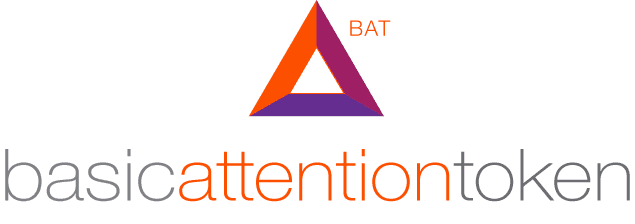The blockchain technology is the brainchild of a person or group of people known by the pseudonym,
Satoshi Nakamoto. But since then, it has evolved into something greater, and the main question every single person is asking is:
What is Blockchain?
Originally devised for the digital currency, Bitcoin, the tech community is now finding other potential uses for the technology.
“Bitcoin is first and foremost a currency; this is one particular application of a blockchain. However, it is far from the only application. To take a past example of a similar situation, e-mail is one particular use of the internet, and for sure helped popularise it, but there are many others.” – Dr Gavin Wood, Ethereum Co-Founder
What is Blockchain Technology?
Picture a spreadsheet that is duplicated thousands of times across a network of computers. Then imagine that this network is designed to regularly update this spreadsheet and you have a basic understanding of the blockchain.
Read to understand how a basic blockchain works How to Run a Blockchain on a Deserted Island with Pen and Paper
Information held on a blockchain exists as a shared — and continually reconciled — database. This is a way of using the network that has obvious benefits. The blockchain database isn’t stored in any single location, meaning the records it keeps are truly public and easily verifiable. No centralized version of this information exists for a hacker to corrupt. Hosted by millions of computers simultaneously, its data is accessible to anyone on the internet.
“The blockchain is an incorruptible digital ledger of economic transactions that can be programmed to record not just financial transactions but virtually everything of value.” – Don & Alex Tapscott, authors Blockchain Revolution (2016)
Why use the blockchain technology?
Blockchain technology is like the internet in that it has a built-in robustness. By storing blocks of information that are identical across its network, the blockchain cannot:
- Be controlled by any single entity.
- Has no single point of failure.
Bitcoin was invented in 2008. Since that time, the Bitcoin blockchain has operated without significant disruption. (To date, any of problems associated with Bitcoin have been due to hacking or mismanagement. In other words, these problems come from bad intention and human error, not flaws in the underlying concepts.)
The internet itself has proven to be durable for almost 30 years. It’s a track record that bodes well for blockchain technology as it continues to be developed.
The blockchain network lives in a state of consensus, one that automatically checks in with itself every ten minutes. A kind of self-auditing ecosystem of a digital value, the network reconciles every transaction that happens in ten-minute intervals. Each group of these transactions is referred to as a “block”. Two important properties result from this:
- Transparency data is embedded within the network as a whole, by definition it is public.
- It cannot be corrupted altering any unit of information on the blockchain would mean using a huge amount of computing power to override the entire network.
In theory, this could be possible. In practice, it’s unlikely to happen. Taking control of the system to capture Bitcoins, for instance, would also have the effect of destroying their value.
“Blockchain solves the problem of manipulation. When I speak about it in the West, people say they trust Google, Facebook, or their banks. But the rest of the world doesn’t trust organizations and corporations that much — I mean Africa, India, the Eastern Europe, or Russia. It’s not about the places where people are really rich. Blockchain’s opportunities are the highest in the countries that haven’t reached that level yet.” – Vitalik Buterin, inventor of Ethereum
Blockchain: A network of nodes
These computers, which are part of the blockchain network, are called nodes. Every time a transaction occurs it has to be approved by the nodes, each of whom checks its validity. Once every node has checked a transaction there is a sort of electronic vote, as some nodes may think the transaction is valid and others think it is a fraud.
Each node has a copy of the digital ledger or Blockchain. Each node checks the validity of each transaction. If a majority of nodes say that a transaction is valid then it is written into a block.
What is a Blockchain block?
A block is a container data structure. In the Bitcoin world, a block contains more than 500 transactions on average. The average size of a block seems to be 1MB. A block is composed of a header and a long list of transactions. Let’s start with the header.

The header contains metadata about a block. There are three different sets of metadata:
- The previous block hash. Remember that in a blockchain, every block is inherited from the previous block because we use the previous block’s hash to create the new block’s hash. For every block N, we feed it the hash of the block N-1.
- Mining competition. For a block to be part of the blockchain, it needs to be given a valid hash. This contains the timestamp, the nonce and the difficulty. Mining is another crucial part of the blockchain technology, but it is outside the scope of this article.
- The third part is a Merkle tree root. This is a data structure to summarize the transactions in the block. And we will leave it at that for now. More on this later.
This dependence of one pair on the previous pair makes it a chain, thus getting its name — Blockchain (a chain of blocks).
The whole family of blocks is the Blockchain. Every node has a copy of the Blockchain. Once a block reaches a certain number of approved transactions then a new block is formed.
The Blockchain updates itself every ten minutes. It does so automatically. No master or central computer instructs the computers to do this.
As soon as the spreadsheet or ledger or registry is updated, it can no longer be changed. Thus, it’s impossible to forge it. You can only add new entries to it. The registry is updated on all computers on the network at the same time.
Blocks in Blockchain are tied to the next block by hashes. If data in one block is modified, hashes need to be recalculated for all the following blocks and since calculating the hash is a very resource intensive operation, it gets practically impossible to do that and hence the network rules out the invalidated block. The calculation of the hash is called mining. Here are some Crypto Mining Business Model Used Worldwide
Bitcoin is the result of mining.
All the computers on the blockchain network, keep a copy of the full blockchain, so if one block or one complete chain at a particular computer or multiple computers is modified, the whole network tries to compare it with their own copies of the full chain.
The users’ safety when using the blockchain technology
In the case of blockchain technology, private key cryptography provides a powerful ownership tool that fulfils authentication requirements. Possession of a private key is ownership. It also spares a person from having to share more personal information than they would need to for an exchange, leaving them exposed to hackers.
Authentication is not enough. Authorization – having enough money, broadcasting the correct transaction type, etc – needs a distributed, peer-to-peer network as a starting point. A distributed network reduces the risk of centralized corruption or failure.
This distributed network must also be committed to the transaction network’s recordkeeping and security. Authorizing transactions is a result of the entire network applying the rules upon which it was designed (the blockchain’s protocol).
Authentication and authorization supplied in this way allow for interactions in the digital world without relying on (expensive) trust. Today, entrepreneurs in industries around the world have woken up to the implications of this development – unimagined, new and powerful digital relationships are possible. Blockchain technology is often described as the backbone for a transaction layer for the Internet, the foundation of the Internet of Value.
Not all decentralized systems are Blockchain! The Blockchain technology is a particular type of decentralized system that has a unique property.
In fact, the idea that cryptographic keys and shared ledgers can incentivize users to secure and formalize digital relationships has imaginations running wild. Everyone from governments to IT firms to banks is seeking to build this transaction layer.
Authentication and authorization, vital to digital transactions, are established as a result of the configuration of blockchain technology.
The idea can be applied to any need for a trustworthy system of record.
It is this difference that makes blockchain technology so useful – It represents an innovation in information registration and distribution that eliminates the need for a trusted party to facilitate digital relationships.
Yet, blockchain technology, for all its merits, is not a new technology.
Rather, it is a combination of proven technologies applied in a new way. It was the particular orchestration of three technologies (the Internet, private key cryptography and a protocol governing incentivization) that made bitcoin creator Satoshi Nakamoto’s idea so useful.

Is blockchain technology part of the future?
Most significant companies will run business processes on their private blockchains.
- Private blockchains: Within the next years, major companies will conduct several business processes on their own private, permissioned corporate blockchains. Employees, customers, vendors, and service providers at each company will be able to securely access that company’s private blockchain via strong cryptographically authenticated transactions.
- Consortia blockchains: Many companies will have started to build bottom-up consortia blockchains with a small number of counterparties in their ecosystem collaborating on a small number of use cases to share trusted source-of-truth infrastructure, supply or value chains.
- Business use of public blockchains: Some companies will employ public Ethereum with their use cases that employ the same stack of blockchain components that they have purchased or built for their private Ethereum-based implementations.
Important points of the blockchain technology:
- A Blockchain is a type of diary or spreadsheet containing information about transactions.
- Each transaction generates a hash.
- A hash is a string of numbers and letters.
- Transactions are entered in the order in which they occurred. The order is very important.
- The hash depends not only on the transaction but the previous transaction’s hash.
- Even a small change in a transaction creates a completely new hash.
- The nodes check to make sure a transaction has not been changed by inspecting the hash.
- If a transaction is approved by a majority of the nodes then it is written into a block.
- Each block refers to the previous block and together make the Blockchain.
- A Blockchain is effective as it is spread over many computers, each of which has a copy of the Blockchain.
- These computers are called nodes.
- The Blockchain updates itself every 10 minutes.
Sources dev.to hackernoon.com blockgeeks.com coindesk.com cointelegraph.com







